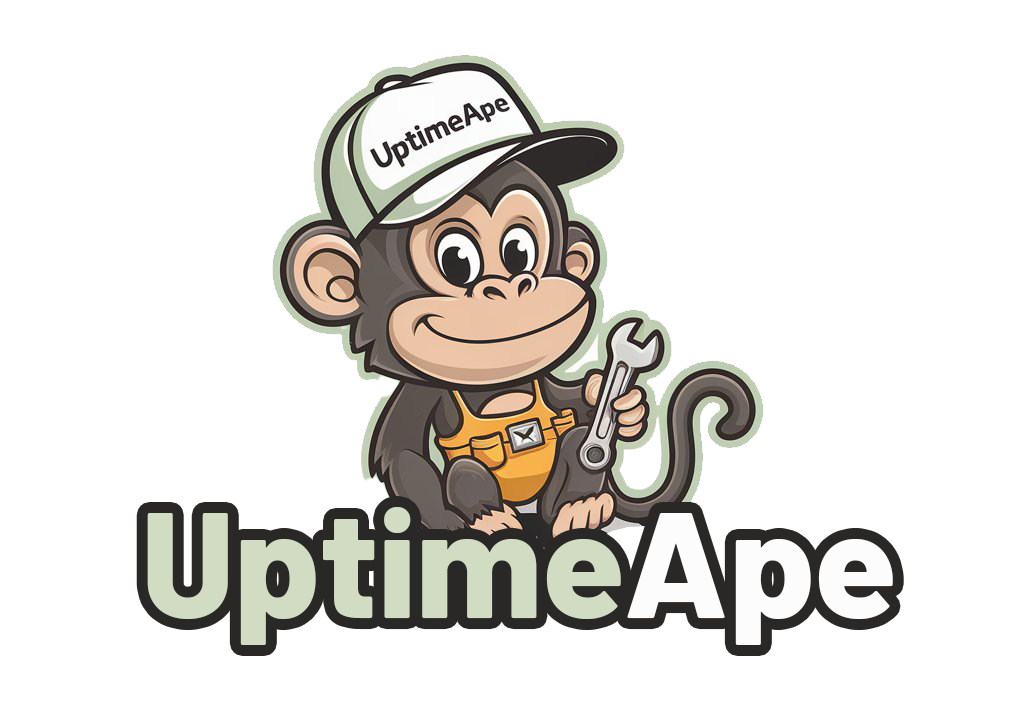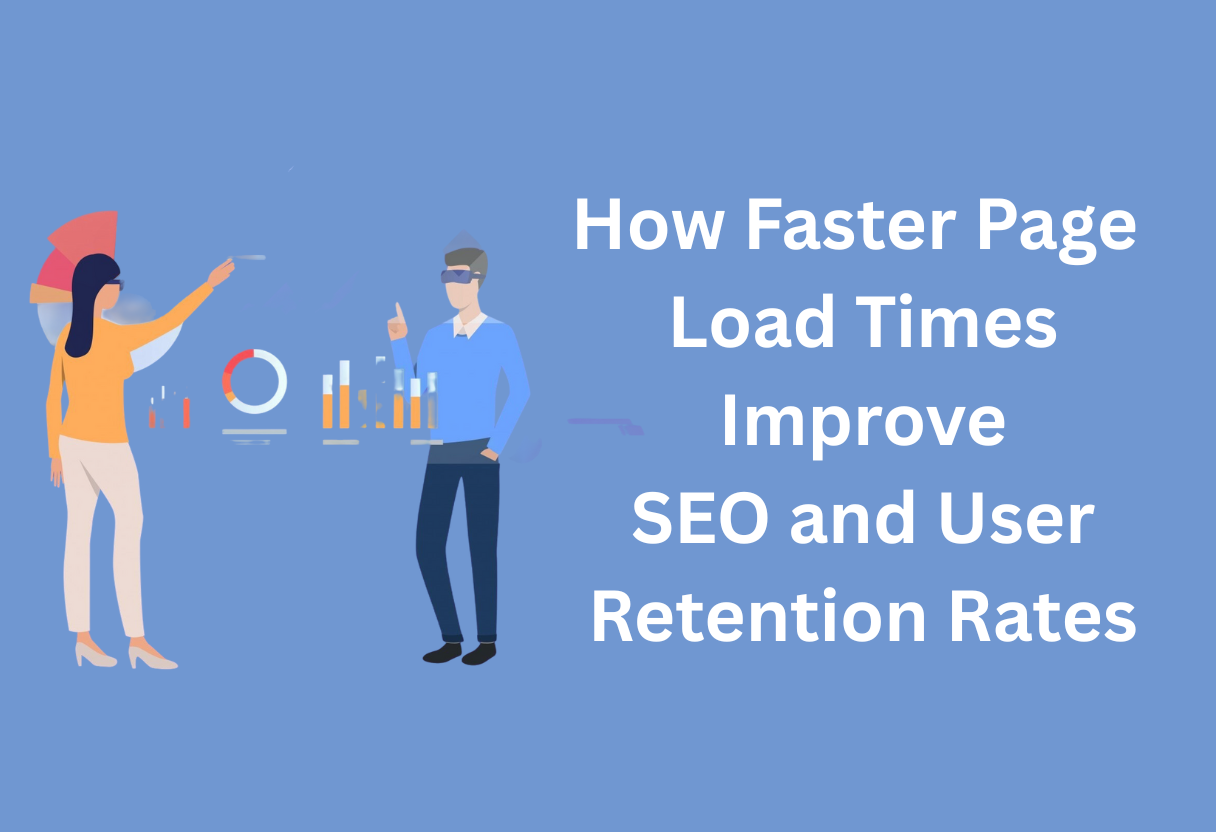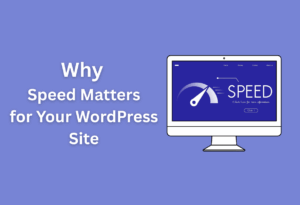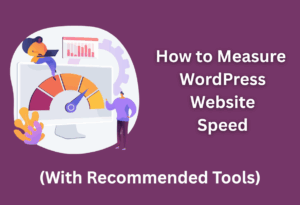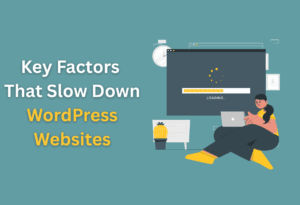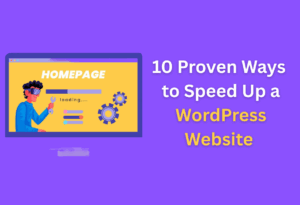With the increasing competition online, ensuring your website loads quickly is imperative for both search engine optimization (SEO) and retaining your visitors. Faster page load times not only enhance user experience but also signal search engines that your site is reliable, leading to better rankings.
In this post, you will discover how improving load times can significantly impact your SEO efforts and keep your audience engaged, ultimately boosting your conversion rates and growth.
Understanding Page Load Time
Your website’s performance is significantly influenced by its page load time. This refers to how long it takes for a webpage to fully display its content after a user clicks on a link. A faster page load time not only enhances user experience but also plays a vital role in effective search engine optimization (SEO).
Definition of Page Load Time
Across the digital landscape, page load time is defined as the duration it takes for a web page to fully load and be ready for user interaction. It encompasses everything from the initial browser request to the rendering of the final elements on the page.
Factors Affecting Page Load Speed
Alongside understanding what page load time is, it’s vital to recognize the factors that can affect it. These include server response time, image sizes, the number of HTTP requests, and enabling compression on files. Some key elements to consider are:
- Server response time and latency
- Image optimization and file formats
- CSS and JavaScript file sizes
- External scripts and plugins
Assume that each of these factors can either enhance or hinder your website’s performance. It’s vital to address them to create an efficient browsing experience for your users.
Affecting the load speed of your website involves a closer look at how much data needs to be transferred and processed before a page fully loads. Various elements contribute to this, such as network speed, coding practices, and server location. You should focus on key areas, including:
- Utilizing content delivery networks (CDNs)
- Minimizing redirects
- Implementing caching strategies
- Regularly auditing third-party scripts
Assume that by optimizing these aspects, you can significantly improve the speed at which your pages load, resulting in a better user experience and potential SEO benefits.
Measuring Page Load Time
Load times can be assessed utilizing various tools and metrics that provide insights into your site’s performance. Tools like Google PageSpeed Insights or GTmetrix offer valuable information about how quickly your pages are loading and highlight areas for improvement.
To effectively measure page load time, consider regularly analyzing your website’s speed under different conditions. You should take into account both first meaningful paint (FMP) and time to interactive (TTI) as metrics, as they inform you about user experience viability. Utilizing these resources will guide you in maintaining an optimal load time.
The Importance of SEO
You should understand that Search Engine Optimization (SEO) is the practice of enhancing your website to improve its visibility in search engine results.
It encompasses several core components such as keyword research, on-page optimization, off-page strategies, and technical SEO. Mastering these aspects is vital for ensuring your site appears prominently when users search for relevant terms.
Defining SEO and Its Core Components
Below, you’ll find that SEO is fundamentally about aligning your web content with search engine algorithms. By optimizing your site using targeted keywords, creating quality content, improving site speed, and building reputable backlinks, you can significantly boost your site’s ranking and attract more visitors.
How SEO Affects Website Visibility
Components of effective SEO strategies lead directly to better website visibility. When you utilize relevant keywords and implement technical enhancements, you make it easier for search engines to crawl and index your site. The more optimized your content, the higher your pages can rank, resulting in increased organic traffic.
With effective SEO, you position your content in front of individuals actively searching for products or services similar to what you offer. The higher your site appears in search engine results, the more likely potential customers will discover your business, thus driving more qualified traffic to your page.
The Role of User Experience in SEO
Across the SEO landscape, user experience (UX) plays a pivotal role. Factors such as page load speed, mobile responsiveness, and intuitive navigation all contribute to how users interact with your site. By enhancing these elements, you create a seamless experience that keeps visitors engaged and encourages them to explore further.
Consequently, a positive user experience not only helps in retaining visitors but also contributes to your SEO rankings. When users have a smooth journey on your site, they are more likely to stay longer, reducing bounce rates and increasing conversions, which signals to search engines that your content is valuable and relevant.
Page Load Time and SEO
All website owners should understand the direct correlation between page load times and SEO performance. When your site performs optimally, it not only attracts visitors but also signals to search engines that your content is valuable and worthy of a higher ranking.
Impact of Load Time on Search Engine Rankings
An increase in page load time can significantly impact your search engine rankings. Studies indicate that websites loading in under two seconds are favored by search engines, while those exceeding this mark tend to drop in their ranking positions, leading to fewer visitors overall.
Google’s Algorithm and User Experience Signals
Before you underestimate the importance of load time, consider Google’s prioritization of user experience. Google’s algorithms utilize various metrics, including page load speed, to assess how well your website meets user needs, which can heavily influence your search rankings.
Load times affect your site’s Core Web Vitals, which are imperative indicators of user experience. Google has integrated these metrics into its ranking criteria, which means that faster loading times not only enhance user satisfaction but also improve your visibility to search engines.
If users find your website slow and unresponsive, they are more likely to abandon it, signaling to Google that it may not be worth promoting in search results.
Case Studies: Load Time Improvements and Ranking Gains
Impactful case studies reveal how load time improvements can result in noticeable ranking gains. Key examples include:
- Walmart achieved a 2% increase in conversion rates for every 1-second reduction in load time.
- Google found that moving from 100 milliseconds to 200 milliseconds in load time gave them a significant boost in user engagement.
- Amazon reports a loss of 1% in sales for every 100 milliseconds added to load time, illustrating how vital speed is to their revenue.
Gains from these studies underline the importance of optimizing your page load times. When you address loading speed, you can directly influence your site’s ranking potential and drive customer engagement.
Many businesses have seen tangible improvements in their search engine visibility after implementing faster loading solutions, demonstrating that a proactive approach to your website’s performance pays dividends in both SEO and user retention.
User Retention Rates
For any online business, understanding user retention rates is crucial. These rates represent the percentage of visitors who return to your website after their first visit, indicating how well you engage your audience and keep them coming back for more.
What Are User Retention Rates?
Along with measuring user engagement, user retention rates reveal how effectively you deliver value to your users. A higher retention rate signifies that visitors find your content or services appealing enough to return, which directly impacts your long-term success and revenue generation.
Factors Influencing User Retention
Between various elements impacting user retention, some of the most significant include website performance, content relevancy, and overall user experience. Addressing these areas can lead to better engagement and satisfaction levels, ultimately resulting in improved retention rates. Consider these factors:
- Page load speed
- Mobile responsiveness
- Ease of navigation
- Quality of content
This highlights the importance of optimizing your site to meet user expectations effectively.
What’s more, personalized experiences and timely communications can significantly elevate user retention. Providing tailored recommendations or updates can keep users engaged. Other factors to consider include:
- Consistent brand messaging
- Effective customer support
- User-friendly design
- Regular updates and fresh content
This approach fosters a sense of loyalty among users, encouraging them to return to your site.
Importance of User Experience in Retention
User experience plays a vital role in whether users choose to stay engaged with your website. By prioritizing seamless interactions, you create a positive environment that makes users feel comfortable and valued.
Retention hinges on your ability to provide nurturing experiences that keep your audience satisfied and wanting more. This includes optimizing site performance, enhancing user navigation, and delivering meaningful content that resonates with your target audience. By focusing on these aspects, you can build lasting relationships with your users.
How Load Time Affects User Retention
Now that you understand the impact of load times on SEO, it’s crucial to explore how it directly influences user retention. Your website’s speed can dictate whether a visitor stays and engages or leaves in frustration. Fast load times create a positive first impression, while delays can lead to higher bounce rates and lost opportunities.
Correlation Between Load Speed and User Drop-off
One of the most significant indicators of user behavior is the correlation between load speed and user drop-off rates. Research shows that even a one-second delay in loading can lead to a decrease in user satisfaction and an increase in abandonment. This highlights the importance of maintaining optimal load times to keep users engaged.
User Behavior and Expectations
After evaluating your audience’s behavior, you may notice that users increasingly expect fast-loading websites. Studies indicate that the average person won’t wait longer than three seconds for a page to load before moving on. Your site’s performance not only impacts first impressions but also influences perpetual user behavior.
At this point, it’s crucial to recognize that consumers today have grown accustomed to speedy experiences due to advancements in technology and design. As a result, your website must meet these expectations if you want to keep users returning. If your pages take too long to load, they are likely to seek faster alternatives, diminishing not only your user engagement but also your reputation.
Real-World Examples of Retention Rate Improvements
Across multiple industries, companies that have invested in improving their page load times report substantial increases in user retention rates. Brands that prioritize speed find that users are more likely to complete transactions and revisit their sites, creating a loyal customer base.
Time and again, case studies have shown that organizations can boost their conversion rates and customer satisfaction by simply optimizing load times. For instance, major e-commerce sites have increased their sales by optimizing their site’s speed, demonstrating that when you invest in performance, the benefits become evident in overall user engagement and retention.
Best Practices for Improving Page Load Times
Many website owners may overlook the impact that page load times can have on their SEO and user retention rates. To enhance loading speed, you need to adopt a few necessary practices that can significantly boost your site performance.
Optimizing Images and Multimedia Content
Best practices involve compressing images and videos to reduce their file sizes without sacrificing quality. Implementing scalable vector graphics (SVGs) for logos and icons can also improve loading times, while using modern formats like WebP can further enhance your multimedia content’s efficiency.
Minimizing HTTP Requests
Content optimization plays a key role in improving page load times. By reducing the number of files your browser needs to download, you can accelerate page rendering. This can be achieved by streamlining HTML, CSS, and JavaScript files, and combining them wherever possible.
Also, consider eliminating unnecessary plugins and scripts, as each additional request adds to load times. Use CSS sprites for images, allowing multiple images to be combined into a single file, which effectively reduces the number of requests your server must handle.
Leveraging Browser Caching
Below are strategies to help improve your load times through effective caching techniques. Make use of the cache control headers, which tell browsers how long to store certain files. This prevents repeated downloads of the same resources on subsequent visits.
HTTP caching can dramatically improve user experience by allowing browsers to store select resources for extended periods. You can instruct browsers to cache static assets, such as CSS and images, so returning visitors experience faster loading times when navigating your site.
Utilizing Content Delivery Networks (CDNs)
By implementing a CDN, you can distribute your site’s content across multiple servers located in different geographic areas. This allows your users to access data from a server nearest to them, significantly reducing the time it takes to load your pages.
Leveraging CDNs not only improves load speeds but also enhances reliability, especially during traffic spikes. As a result, your website can maintain optimal performance even under high demand, ensuring consistent user satisfaction and engagement.
Reducing Server Response Time
Requests made by your visitors can be slowed down by various server-side factors. To decrease server response time, you should optimize your database queries and ensure that your server resources are adequate to handle traffic.
Load times can be affected by the underlying infrastructure you use to host your website. Consider utilizing dedicated hosting or managed services that specialize in speed optimization, as these can directly influence how quickly your server processes requests and serves content to users.
Monitoring and Testing Page Load Times
Once again, optimizing your website for speed is a continuous process that requires monitoring and testing. Page load times can fluctuate due to various factors, making it vital for you to regularly assess your site’s performance. Keeping an eye on these metrics can help you identify issues before they affect your SEO and user retention rates.
Tools for Measuring Load Times
Any effective strategy begins with the right tools. Popular tools such as Google PageSpeed Insights, GTmetrix, and WebPageTest allow you to measure your website’s load times comprehensively. These platforms provide valuable insights into what might be causing delays and also offer recommendations for improvements, enabling you to keep your site running efficiently.
Regular Audits for Maintaining Website Speed
Load testing should become a routine practice. By conducting regular audits of your website’s speed, you can identify and rectify performance bottlenecks before they escalate into larger issues. These audits help ensure that any changes made to your site do not negatively impact load times, allowing you to maintain an optimal user experience.
Hence, you should set a schedule for these audits—be it monthly or quarterly—depending on how often you update your site. Keeping tabs on your website’s speed and performance can help you quickly address problems, thereby improving user satisfaction and maintaining your search engine rankings. Regular audits also allow you to benchmark your improvements against previous performance metrics.
A/B Testing to Assess User Retention
With A/B testing, you can compare two versions of your website to determine how different load times affect user retention. This process allows you to quantify changes and make informed decisions about which speed enhancements are most effective in keeping your audience engaged.
Measuring user behavior during A/B tests will give you a clearer picture of the impact that load times have on retention. By analyzing metrics such as bounce rates and session durations, you can understand what speeds lead to better engagement. This information could be what you need to fine-tune your site for optimal performance, ensuring that users stick around longer and keep coming back.
Final Words
Drawing together the insights on page load times, you can see how they directly impact your SEO and user retention. A faster loading website not only improves your search engine rankings but also enhances the overall experience for your visitors
. As you optimize your page load speed, you are more likely to keep users engaged, encouraging them to explore more of your content and return in the future. By prioritizing performance, you effectively enhance both your site’s visibility and user satisfaction, leading to sustained growth and success.
